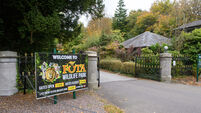NAMA was never the only game in town, says professor
Prof Lucey who has been a vocal critic of the process said that it did “not have to involve the mass overpayment for property”.
“There were ways that we could have developed NAMA that would have put taxpayers at much less risk. We could have looked at the original Nama 2.0 approach espoused by Patrick Honohan whereby we pay a low price for assets and then compensate shareholders with a share in NAMA’s potential profits. This achieves risk sharing,” he said.













